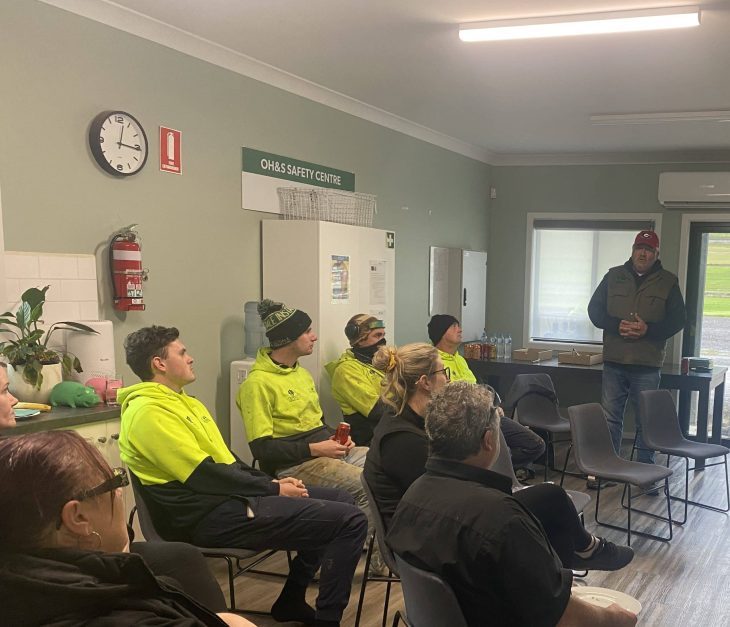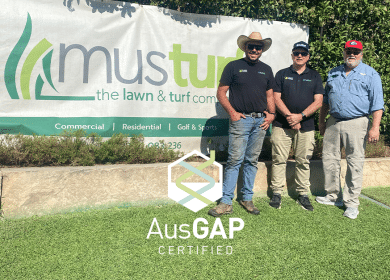
Workplace safety is more than just a set of guidelines and regulations; it’s a culture that must be nurtured, developed, and integrated into an organisation. In industries like turfgrass production and management, where physical labour and equipment use are integral parts of daily operations, fostering a culture of safety is not just a legal obligation, it’s a moral imperative.
What is the importance of workplace safety in the turf industry?
The turf industry involves various activities that carry inherent risks, from operating heavy machinery, to handling chemicals, and working in different environmental conditions. The physical nature of the work, combined with the potential hazards, makes it crucial for turf managers to implement comprehensive safety measures. A culture of workplace safety ensures that every employee, regardless of their role, is aware of these risks and understands the protocols in place to mitigate them.
Injury or accidents on the job not only impact the health and wellbeing of employees but can also disrupt operations, affect productivity, and damage the reputation of the business. By prioritising safety, turf farms and turfgrass professionals demonstrate their commitment to the welfare of their employees and their dedication to maintaining a productive and efficient workplace.
How is safety integrated into daily operations?
Creating a culture of workplace safety begins with integrating safety practices into daily operations. This starts with thorough training for all employees, ensuring that they are well versed in the safe operation of machinery, proper handling of chemicals, and the importance of personal protective equipment (PPE). Regular refresher courses and updates on safety protocols help to reinforce these practices and keep safety top of mind for everyone on site.
Moreover, safety should be a regular topic of discussion during team meetings, with employees encouraged to voice concerns, share experiences, and suggest improvements. This open communication fosters a sense of collective responsibility, where every team member feels accountable for not only their own safety but also the safety of their colleagues.
What is leadership’s role in promoting safety?
Leadership plays a pivotal role in cultivating a safety culture. When management prioritises safety, it sets the tone for the entire organisation. Leaders must lead by example, consistently adhering to safety protocols, and demonstrating their commitment to maintaining a safe working environment.
In turf farms producing AusGAP certified turf, where precision and quality are paramount, leaders understand that safety is an essential component of operational excellence. By integrating safety into the core values of the business, they ensure that it is not seen as an add on but as an intrinsic part of the work process.
How does AusGAP promote a workplace safety culture?
For producers of AusGAP certified turf, the commitment to quality is non-negotiable. AusGAP’s rigorous certification process requires adherence to the highest standards of turfgrass production, including environmental management, operational procedures, and, crucially, workplace safety.
The emphasis on safety is reflected in the way these turf businesses operate. Businesses producing AusGAP certified turf are required to maintain detailed records of safety practices, conduct regular audits, and ensure compliance with all relevant safety regulations. This not only protects workers but also ensures that the turf produced is handled with care, maintaining its quality from the field to the customer.
What is the key to a culture of safety in the workplace?
A culture of safety is not static; it must evolve and improve over time. Continuous improvement involves regularly reviewing safety procedures, learning from any incidents that occur, and staying updated with the latest industry standards and technologies. For turf farms, this might mean adopting new safety equipment, implementing new training programs, or enhancing communication systems to better manage risks. Incorporating feedback from employees is also crucial in this process. Workers on the ground often have valuable insights into potential hazards and practical solutions. By involving them in the continuous improvement process, turf farms and turf professionals can create a more robust and effective safety culture.
Creating a culture of workplace safety is about more than just following rules, it’s about embedding safety into every aspect of a business’s operations. In the turf industry, where the risks are high, and the work is physically demanding, this culture is essential to ensuring the wellbeing of employees and the quality of the product. By fostering a safety-first culture, turf farms and turf professionals not only protect their workers but also enhance their reputation for excellence and reliability in the industry.


